01 Jul Changing the flag
Remarkable time that I clearly remember — Russia’s 90s held nothing patriotic, actually by 180°degree* the opposite. Western ideas, beliefs, interests, norms, and basically lifestyle: what to eat, what to wear, what to watch, what to study,…what …WHAT… what or where to work, how to have fun, how to love, HOW TO LIVE… If you are lucky to fly, or somehow get to the US, you are a hero to gossip about. Hooray, I was one of them — jealous and wanted to be in their shoes — thought, if one day I would be one of those ‘lucky’ fellas I would not stop smiling and would do whatever it takes to stay there. Yeah, It was like a winning the lottery, going to the “dream land” — where, as they say, huh “all your dreams come true” —, if not to read the Liberty Statue’s words ( “give me your tired, your poor, Your huddled masses…the wretched refuse…”),— well, what to add, at that time Russians did really feel like they are those “huddled masses… yearning to breath free” and count me in.
180°degree — is complete reversal, also called as a J-turn.
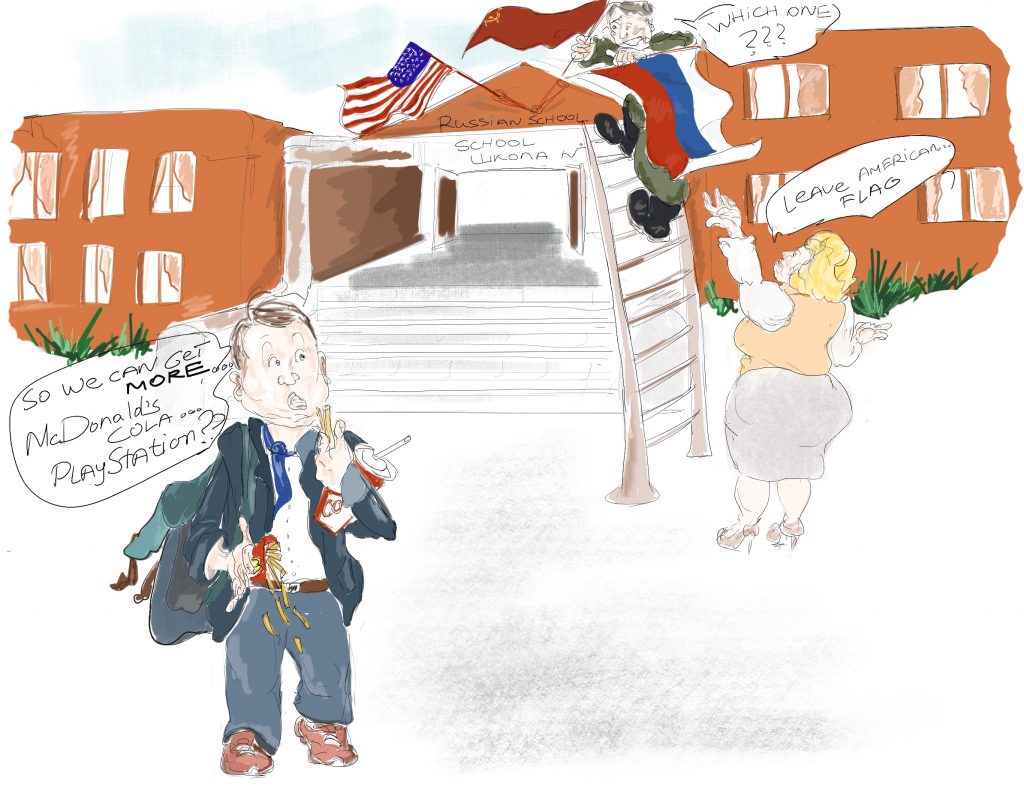
Russia in 90s: one thing was patriotic is the brick, or a few bricks — made in Perm or in Moscow or in Bryansk or in Vladimir… all in Russia — in any school walls…
Country of Contrasts
Troubled times of USSR collapse and liberalisation in 90s paired with financial mess. Real mess. If to be precise, such a rip-off time; devaluation of national currency just bulldozer all the under-the-blanket savings, magically turned it to a toilet paper, in one night. Just like a Cinderella’s story, the golden carriage turned to pumpkin right at the stroke of midnight.
The foreign exchange turnover raised, and currency factor now played a massive role in a country socially segregating people in each city, and not only in Moscow or St. Petersburg. If to compare, in USSR, comrades were severely punished for using foreign money when bypassing the state; usually send to jail or labor camp. At that peculiar time Ruble was like for the unfortunate ones…non-elite, those who are not in business or in politics, and out of any kind of prestige circle. Dollar, as a leprechaun’s golden coin,– often called as bucks, greens, cabbage — weighted way more in value than any bill of national currency, banknotes for peasants.
So there was a big gap between who had dollars and who didn’t; this kicked off a black market businesses that foam a new crime statistics, group-on-group violence, and outlaw pursuit. So far cities like Moscow, St Petersburg, Ekaterinburg, Novosibirsk, Omsk(city where I was born), and more Eastern regions were known for their street fights, if you could call this bareknuckle slaughter a “fight”. In those fights it was easy to notice this three-stripes fashion — gangs were fancy to wear adidas brand and so many jokes were made about it in Russia and abroad — comfy and stylish as they thought, well, for some it was a wedding costume.
Despite the criminal gangs there was a movement of punks, rockers, bikers, religious cults (that are strictly banned now), and more or less, for all of them an American dream was something long-waited-for but both controversial and dazzling promising; they sang American songs, watched American movies, wear American clothes, use American English words (ok, cool, good, bad, man, dude, coke, rock…) Musics, movies, fashion, language — all were keep coming from the US and we[Russians] loved it. It got to me also, I spent most of my teenage years in Russia living up to American dream, for which I now often ridiculed by my friends…
I was overthinking on the life standards abroad before leaving Russia. So after a few month being in the US I started to think maybe this place wasn’t quite the dream land I thought, actually just a bit same daft, witty, casually dealing with social disagreements, streets fights, street crimes, desperate poverty, drug&alcohol abuse,… So basically, I change the location but the setting, more or less, stayed the same. There are many good things that surprised me, like hospitality of people in the South States, spring break Hollidays, college parties, highly entertaining sport tournaments, comforting tools for shopping for studying for driving, large portions of food and drinks (soda and free water in caffe/restaurants).
But there was also noted feature that stood out quite often and carried out as a cliché, or say “classics” — being pretentious to carry on random talks and promises, like not giving much weight on words. Yeah, sounds like I was hoodwinked there a few times,…ahem, many times especially with customer services, silly me. 😛
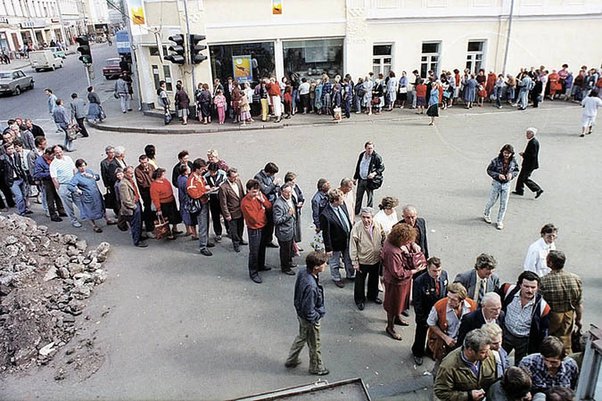
Russia’s city centres is 90s — queues and queues everywhere …pick one of your like, finish it in 5 hrs, and get nothing but a cute note “Sold out”, ” Out of stock” ,”Come tomorrow”, or “Pity you an idiot”
Money talking
Shortage of goods for the 1st, 2nd, 3rd, 4th…necessity, empty shelves, miles and miles queues of folks who just standing there for a one product, whether milk or bread. At that time capitals like Moscow and St Petersburg could brag about their easy access to foreign goods; first supermarket “Kalinka- Stockmann” opened in 1989 (Zatsepsky Val, Moscow), the next one was the large European retail chain of Julius Meinl an Austrian brand in Central Tourist House, and then on New Arbat (fancy street in Moscow) the Irish House with the Shamrock bar started selling their goods and beer in 1991. But its was only in two capitals while the most population was in deep struggle to find essential goods to feed their families, not mentioning there was a big economic recession and millions and millions were thrown to the streets to beg for money.
Pickpocketing was flourishing on the streets, in the public transport, restaurants, concert. Hand watches (were so rare and about 10% could wear it), jewellery ( necklaces, rings, earrings –often was up to 18K, 22K pure gold, not like today), photo cameras, and of course wallets (money) were the main targets to get and sell in pawn shop.
Time of joint ventures between local and foreign business: the Russian side organise the placement, the foreign side was handling the store management, assortment. Store employee were trained abroad, goods were imported form Europe and could be bought with dollars (US), marks (German), or pounds (UK). So Russian folks had to exchange/buy foreign currency if they wanted to look cool — to have western goods.

Standard Q in 90s for Milk, cheese, butter and sour cream (Молоко in eng. is milk)
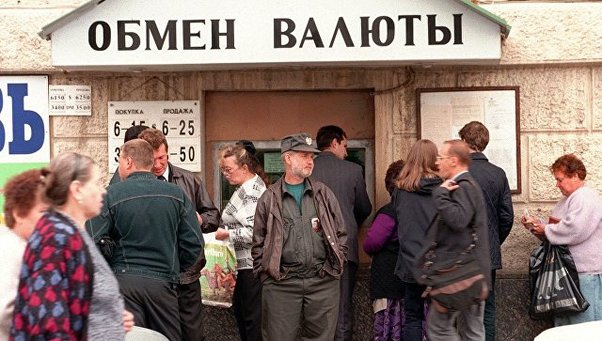
Exchange point (“Обмен валюты” in eng. is Exchange currency)
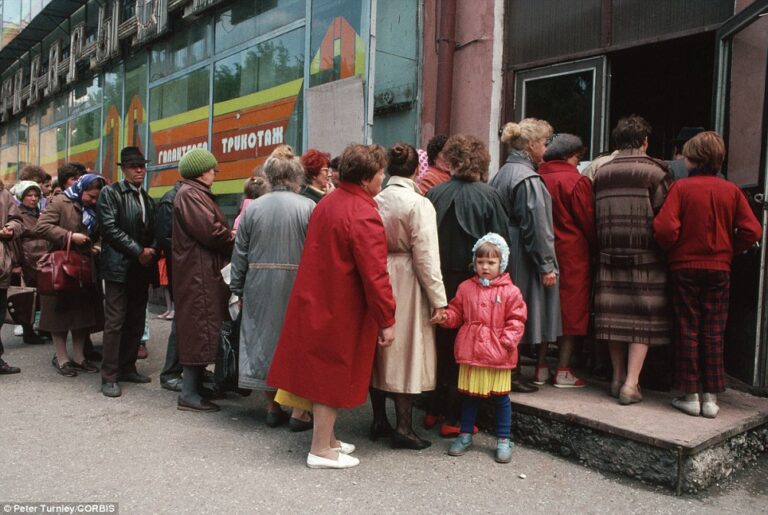
The Q for textile. In 90s Russia most women were making their own clothes (sewing and knitted). How handy !
Somewhere around 1995, the problem with local product deficit was fixed… yeah took them about 5 years to make the same goods that foreign investors could offer in their supermarkets for dollars, marks, or pounds. Why it took ’em so long tho? They could make those goods way before 1995. Foreign business gradually started closing, selling shares in retail to Russian partners that were selling goods for rubles.
But of course, switching to the ruble didn’t stop the use of foreign currency in Russia for many purposes especially during periods of so-called economic turbulence; buy and sell foreign currency in commercial banks was one of the main and clever things to do. Only in 2004 it was possible to clearly establish cases when Russians can carry out currency transactions between themselves or in favour of 3rd parties. To this day the currency ($ or € and now ¥) has become a tool with which folks can save their money from inflation — knowing how shaky rubble exchange rate can be — and plus easy to spend on a journey abroad.


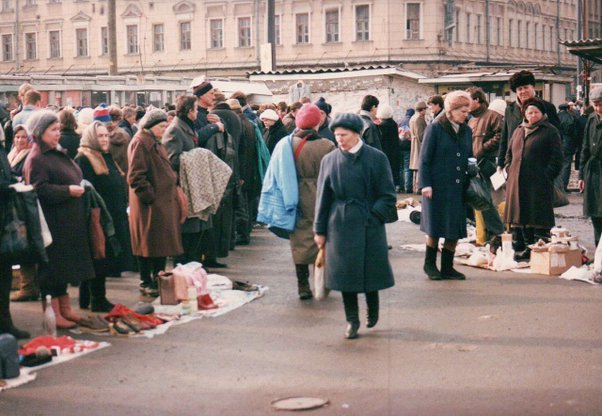
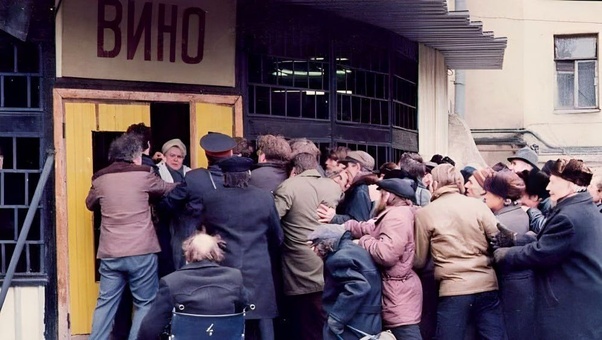

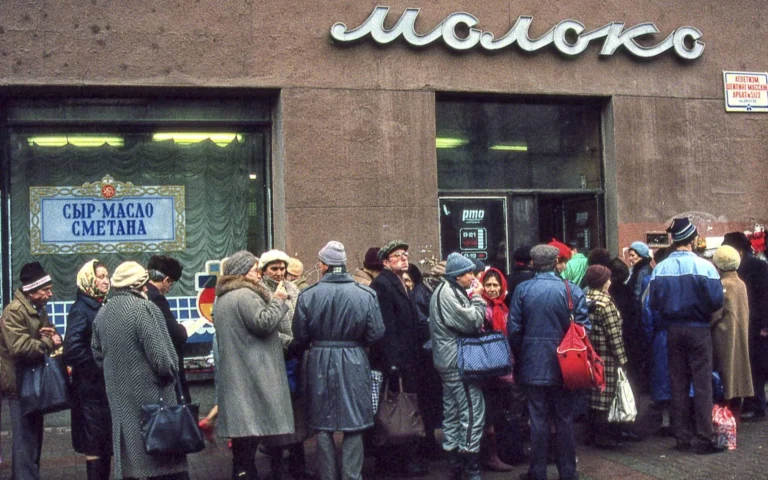
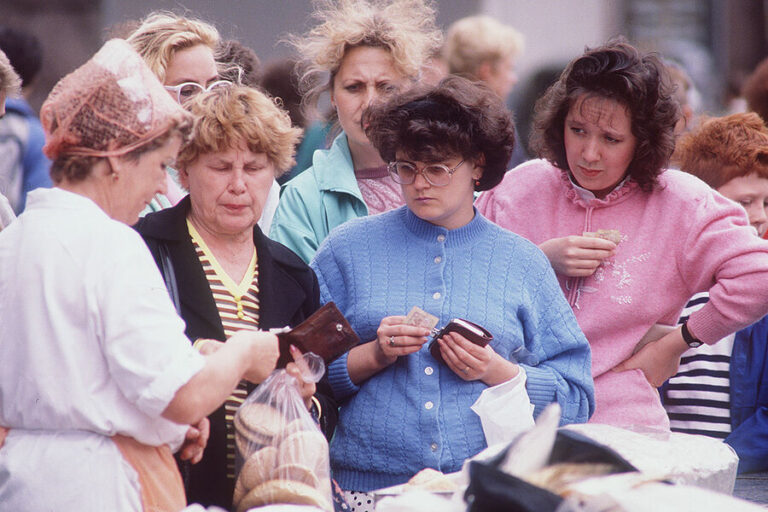
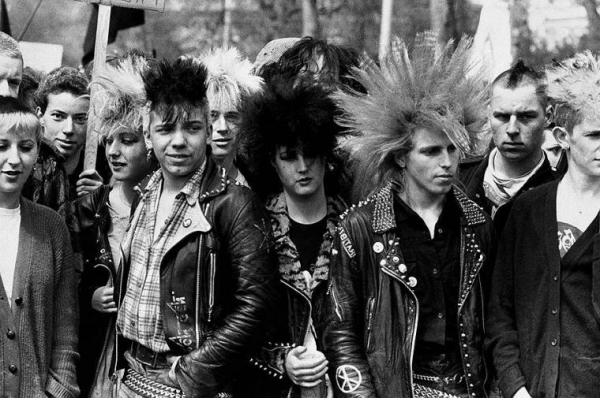
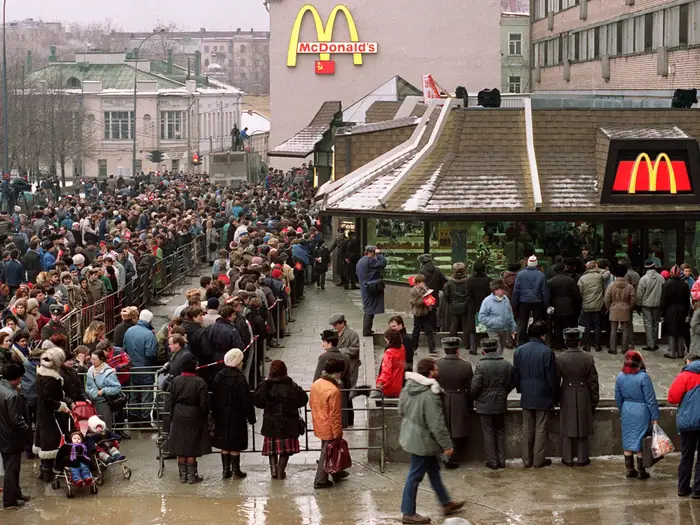
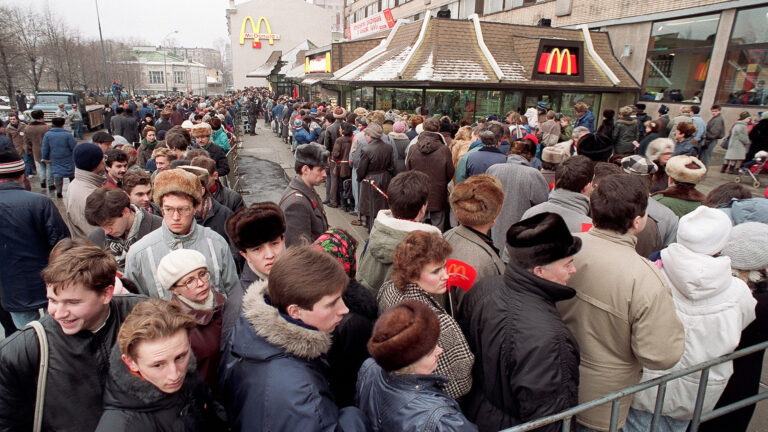
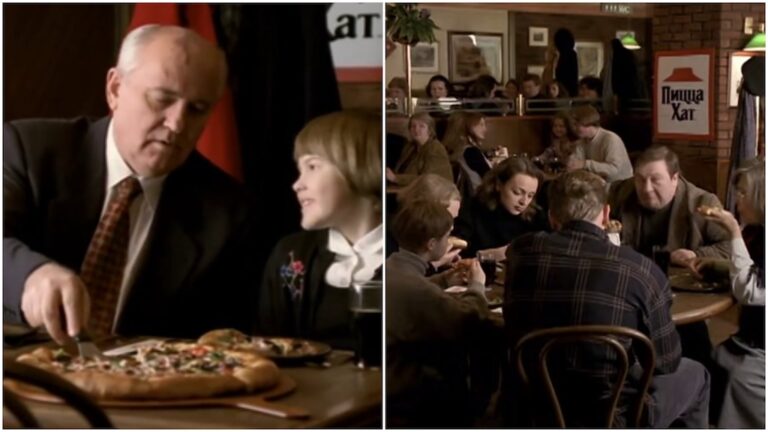
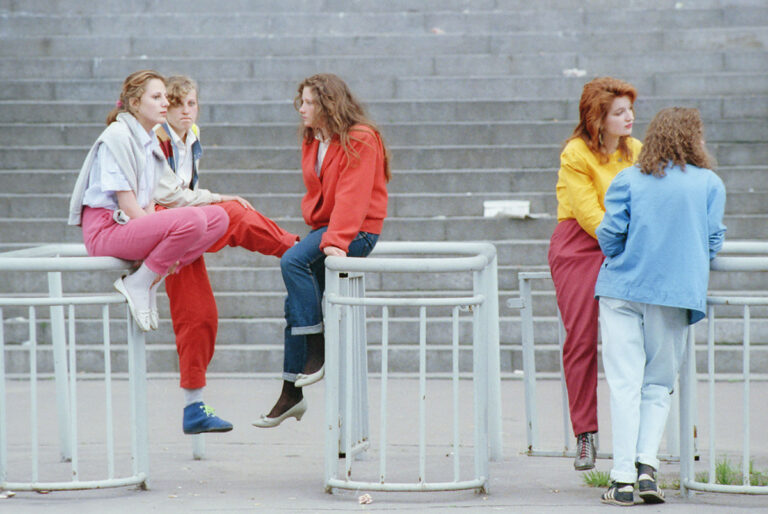
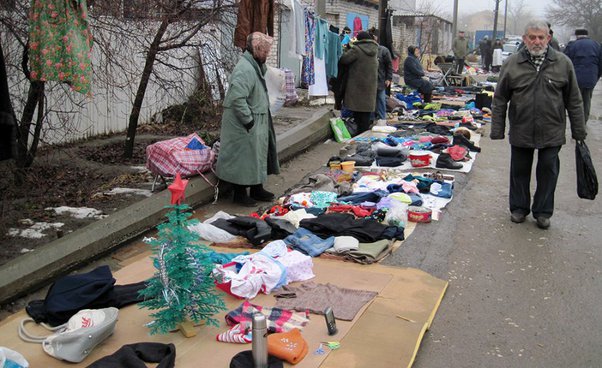
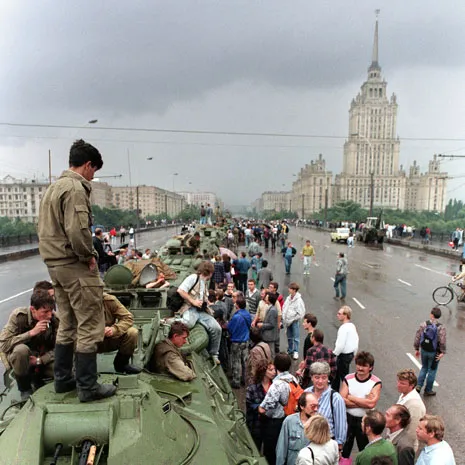
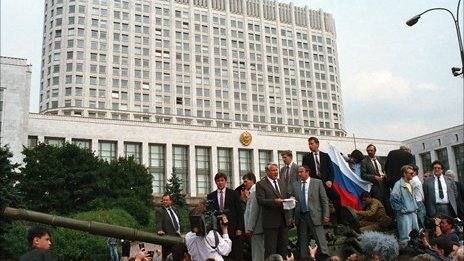
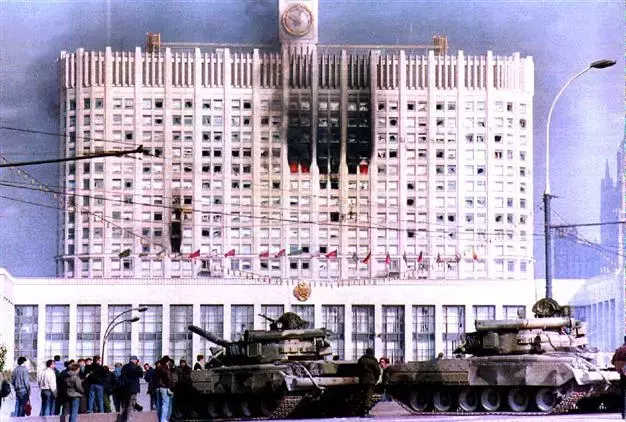

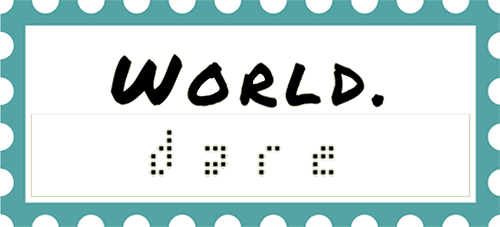

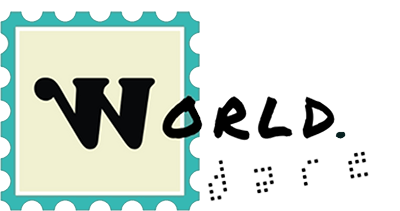

Vitazen Keto Gummies
Posted at 06:21h, 03 AugustVitazen Keto Gummies Awesome! Its genuinely remarkable post, I have got much clear idea regarding from this post . Vitazen Keto Gummies